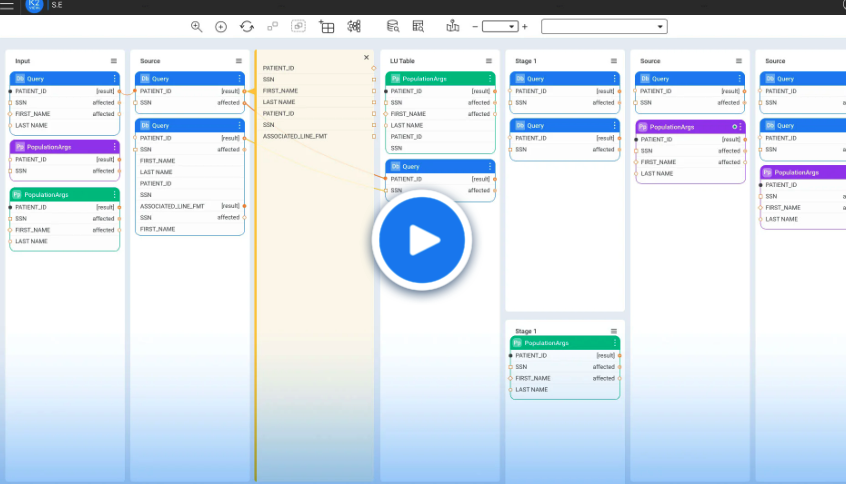A practical guide to conversational AI
What is Conversational AI?
Last updated on February 11, 2025

Conversational AI is a technology that enables computers to understand, process, and respond to human language in a natural and contextually relevant way.
01
What is conversational AI?
Conversational AI is a technology based on Machine Learning (ML) and Natural Language Processing (NLP) that lets computers interact with people in a completely natural manner. It basically understands what you’re saying or typing and then responds in a way that makes sense. This is the tech that powers the chatbots that you come across in almost evert website you visit.
The goal is simple: Make conversations with machines feel as close as possible to talking to a real person. Instead of sticking to rigid scripts, conversational AI adapts to what you’re asking, picks up on context, and delivers relevant answers or actions. For example, if you ask a virtual assistant to book a flight, it understands what you mean, pulls up options, and even helps you finalize the booking.
Conversational AI technology is available through generative AI (GenAI) frameworks, like Retrieval Augmented Generation (RAG), which inject enterprise data into Large Language Model (LLM) prompts to elicit more precise and relevant responses. More on RAG in section 9.
02
How conversational AI and generative AI differ
Conversational AI and generative AI are distinct technologies with different purposes, although they can work together to enhance user experiences.
Conversational AI
The primary goal of conversational AI is to enable machines to understand human speech, follow conversational flows, and respond intelligently. Highly attuned to tasks like recognizing intent, managing dialogue flow, and providing accurate answers, conversational AI systems are designed to stay within predefined parameters, ensuring that they respond only to queries within their scope. For instance, a chatbot on a banking platform will answer questions about account balances or transactions but will avoid answering questions about sports scores.
Generative AI
Generative AI, on the other hand, focuses on creating new and original content by learning from large datasets. It can generate text, images, videos, or even music, and has applications beyond conversational settings. Generative AI is more open-ended, producing creative responses to queries, including those outside predefined parameters. However, it’s less focused on understanding specific user intents or maintaining conversational coherence.
Combining conversational AI and generative AI
In many advanced AI systems, conversational AI and generative AI are integrated to leverage the strengths of both. Conversational AI interprets user inputs, maintaining context and conversational relevance, while generative AI creates dynamic, creative, and contextually informed responses. This combination expands the system’s ability to handle complex, out-of-scope queries, making it suitable for use cases that require both precision and creativity.
03
Why is conversational AI so popular?
Conversational AI is popular because it makes interacting with technology feel easy and natural. Instead of navigating complex menus or waiting on hold, people can just ask questions or make requests in plain language and get quick answers or results. It’s a game-changer for generative AI use cases in customer service.
Businesses love conversational AI because it can handle interactive tasks like customer support or sales inquiries quickly and efficiently, day and night, for a fraction of the cost of human support. It can also easily accomplish repetitive tasks, like answering common customer questions, scheduling appointments, or processing orders. For users, it’s convenient and often faster than waiting on hold for a real person.
A key advantage of conversational AI is that it keeps learning. The more it interacts, the smarter it gets – constantly improving its ability to understand different accents, phrases, and even slang. It’s not flawless. Language can be tricky, and there are still nuances machines miss, but it’s improving all the time.
04
Conversational AI market drivers
According to analyst Gartner's 2024 Market Guide for Conversational AI Solutions, “Generative AI accelerated the evolution of conversational AI platforms and created opportunities for new GenAI-native solutions, making competition fiercer, intensifying market consolidation and forcing vendors to evolve differentiating capabilities and a clearer use-case focus.”
The demand for conversational AI has grown as organizations realize its ability to boost productivity, efficiency, and customer satisfaction. These solutions can automate a variety of tasks, particularly in customer support and employee assistance, which allows teams to focus on more complex challenges. By handling repetitive functions, conversational AI streamlines operations, enhances overall effectiveness, and delivers tangible benefits in both day-to-day operations and strategic initiatives.
Advances in technology also played a critical role in the emergence of conversational AI. LLM development introduced more powerful and flexible tools for building AI applications and enabled capabilities like context-aware interactions and RAG. These innovations allowed for the creation of GenAI-native solutions, which offer greater personalization and adaptability while leveraging mature, robust, and market-ready conversational AI platforms. GenAI enabled enterprises to embed conversational capabilities into broader applications and workflows, catering to both customer-facing and employee-focused use cases.
05
How conversational AI works
Conversational AI works by combining several advanced technologies to understand and respond to human input. Here’s how it happens, step by step:
1. Input recognition
It starts when you speak or type something. If it’s voice input, the system uses Automatic Speech Recognition (ASR) to convert spoken words into text. For text input, it directly processes the words.
2. Natural Language Processing (NLP)
Once the system has the input, it uses NLP to understand the meaning. NLP breaks down the sentence to identify the user’s intent and key details like names, dates, or specific requests. It also recognizes context to make the response more accurate.
3. Decision-making
Based on the intent and context, the system decides what action to take, such as retrieving information, performing a task, or requesting further clarification if needed.
4. Response generation
After deciding what to do, the system creates a response using Natural Language Generation (NLG) to ensure that the reply sounds clear and natural, rather than robotic or awkward.
5. Output delivery
Finally, the system delivers the response. For voice interactions, it uses Text-to-Speech (TTS) technology to turn the reply into spoken words. For text-based interactions, it responds in kind.
All of this happens in matter of seconds, making conversational AI feel smooth and intuitive. Over time, conversational AI systems learn from interactions to improve their understanding and responses.
06
Conversational AI technology and delivery
Technology
Conversational AI relies on a combination of sophisticated technologies to enable its smooth, human-like interactions. These technologies work together to understand user input, manage conversations, and generate appropriate responses. Key components include:
-
Natural Language Understanding (NLU)
NLU helps the conversational AI system make sense of what you say. It identifies not only the intent behind your message (whether you’d like information, to complete a task, or to make a request) but also extracts any important details like names, dates, and events – and can even sense emotions. By understanding these elements, NLU enables the system to respond with greater accuracy and relevance, paving the way to smoother and more meaningful conversations. The better the NLU, the more the AI feels intuitive and helpful in its responses.
-
Dialog management
Dialog management is what keeps the conversation on track. It ensures the flow remains natural and relevant by remembering previous exchanges and adjusting responses based on that context. This technology allows the system to handle shifting topics without missing a beat. The true value of dialogue management lies in its ability to maintain coherence even through long or complex interactions. It automatically selects the most appropriate responses, making the conversation feel like a continuous, logical exchange – and ensuring that users won’t bail.
-
Natural Language Generation (NLG)
NLG makes sure that your conversations with a GenAI app sound natural and lifelike. Not only does it create clear, understandable answers that align with the flow of conversation, but it also personalizes responses by reviewing your past interactions and your preferences. When responses are more tailored and less robotic, the overall user experience is greatly enhanced.
Delivery
Together, these technologies form the backbone of conversational AI, enabling it to interact more naturally, understand you better, and provide more helpful answers to your questions.

According to Gartner, conversational AI is delivered via:
- GenAI apps
GenAI applications are standalone tools designed for conversational interactions that typically feature a user interface and integrate with broader service offerings. They also offer low-code/no-code functionalities for easy customization and connectivity to data sources. GenAI apps are emerging as valuable tools for employee assistance in tasks like data analysis, HR onboarding, IT support, and customer service. Although still evolving, these applications are well-suited for creating natural and dynamic conversational experiences. - Targeted extensions
Targeted extensions embed conversational AI capabilities directly into existing enterprise applications. Often focused on specific use cases – like contact centers, CRM systems, IT service management, and productivity software, extensions leverage traditional conversational AI technologies alongside newer GenAI capabilities to support content generation, conversational search, and document summarization. While they offer less customization and scalability than dedicated platforms, targeted extensions excel in robust, controlled environments, where they help automate user journeys. - Dedicated platforms
Dedicated platforms provide comprehensive tools for building, managing, and deploying conversational AI solutions at scale. They are ideal for automating complex processes and customer journeys – especially when accuracy and reliability are essential, like in customer support. These platforms integrate traditional conversational AI capabilities, like rule-based scripting and intent recognition, with newer GenAI functionality for better data protection and privacy guardrails, which makes them a preferred choice for large-scale, enterprise-grade implementations.
07
Benefits of conversational AI
Conversational AI offers a wide range of benefits for businesses. By simulating natural, lifelike interactions, it transforms the way organizations engage with both customers and employees, including:
1. Enhanced customer experience
Conversational AI enables organizations to provide immediate responses to customer queries, 24/7, dramatically reducing wait times, and improving the customer experience. By leveraging NLU and sentiment analysis, conversational AI fosters more personalized interactions with more relevant and empathetic responses. It also supports omni-channel engagement, seamlessly connecting with users across such as RAG chatbot systems, websites, and voice interfaces.
2. Increased operational efficiency
By automating repetitive tasks like answering FAQs, scheduling appointments, processing orders, or resolving common technical issues, conversational AI reduces the burden on data teams. This automation leads to faster task completion, lower operational costs, and fewer errors. For example, in AI customer service, conversational AI can manage high interaction volumes simultaneously, reducing the need for human oversight without compromising on quality.
3. Better employee productivity
Conversational AI plays a critical role in enhancing employee productivity. An AI virtual assistant can streamline internal processes like helping employees retrieve information, complete HR tasks, or manage IT support tickets. These tools reduce the time employees spend on routine or administrative tasks, enabling them to focus on strategic or creative initiatives. For example, HR onboarding processes can be expedited by virtual assistants that guide new employees through documentation or training modules.
4. Scalability and consistency
Unlike human teams, conversational AI can scale effortlessly to handle growing interaction volumes. Whether during peak customer service periods or in the face of company expansion, conversational AI ensures consistent service levels without requiring proportional increases in staff. Additionally, it maintains uniformity in messaging and performance – providing the same quality of interaction regardless of scale. This consistency strengthens brand identity and ensures that users receive reliable information and support every time.
5. Data insights and personalization
Conversational AI collects and analyzes interaction data in real-time. This data offers organizations valuable insights into customer behavior, preferences, and challenges. It also supports decision-making – helping organizations to refine their products, services, and strategies based on user feedback. What’s more, conversational AI enhances personalization by allowing AI systems to adapt their responses to individual user profiles and histories. For example, an AI-powered customer service tool can remember previous interactions and offer tailored recommendations or solutions aimed to increase customer satisfaction and loyalty.
6. Competitive edge
Implementing conversational AI provides organizations with a competitive advantage by positioning them as innovative and customer centric. This helps to attract and retain both customers and top talent. What’s more, as conversational AI continues to evolve, companies leveraging this technology are better equipped to stay ahead of industry trends and meet future demands.
08
Conversational AI use cases
Conversational AI is revolutionizing a variety of industries by enabling natural, efficient, and personalized interactions between humans and technology. Some primary use cases include:
1. Customer service
A customer service chatbot or virtual assistant enhances customer support by handling FAQs, troubleshooting issues, and assisting with routine inquiries, leaving human agents free to handle more complex tasks. For example, a conversational AI chatbot could guide users through account setup or resolve billing concerns in real time. Or a virtual assistant could deliver more personalized experiences by remembering user preferences, and providing tailored recommendations and proactive notifications about relevant updates and product promotions.
2. E-commerce
In online retail, conversational AI provides personalized shopping experiences. AI-driven chatbots assist customers with order tracking, returns, and general inquiries. They also provide product recommendations by analyzing user preferences, purchase history, and browsing behavior. AI-powered sales assistants further enhance the shopping journey by offering advice – like helping customers select the right size or style based on individual preferences.
3. Healthcare
Conversational AI is transforming healthcare. Chatdocs ask symptoms-based questions and direct patients to appropriate care. They also assist with appointment scheduling, reducing waiting times and administrative burdens. Virtual assistants provide reliable health information, medication reminders, or mental health support, all of which improve patient engagement and adherence to treatment plans.
4. Education
In education, conversational AI enables personalized learning experiences. AI tutors and learning companions help students understand concepts, guide them through complex topics, and adapt lessons based on individual learning styles. They can answer students’ questions, provide real-time feedback on assignments, and handle administrative tasks like scheduling classes or submitting homework. In remote learning scenarios, such applications provide 24/7 support to learners worldwide.
5. Smart home, social media, and entertainment
Conversational AI extends beyond traditional industries into areas like:
Smart home
Virtual assistants enable users to control appliances, schedule tasks, and receive updates through voice commands.
Social media
AI enhances social media engagement by automating responses, moderating comments, or facilitating interactive polls and campaigns.
Entertainment
Conversational AI powers the entertainment industry with innovations like interactive storytelling that allow users to shape narratives or interact with virtual characters in real time.
09
Conversational AI challenges
Conversational AI has made great strides in recent years but still has a long way to go in its development, deployment, and adoption. Addressing these challenges requires advancements in NLU, stricter ethical guidelines, and user-centric design. Organizations must also create trust and manage expectations regarding the benefits and limitations of conversational AI. The challenges can be grouped into 3 main categories – technical, ethical, and user experience (UX):
1. Technical challenges
Handling complex user inputs is never simple. Conversational AI has difficulty understanding accents or dialects, as well as the nuances of emotion, humor, sarcasm, slang, or any other type of unusual language.
Ensuring AI data privacy and security is another key challenge. Since conversational AI relies on collecting and processing vast amounts of user data, it’s vulnerable to breaches that can potentially compromise sensitive information.
Developing high-quality frameworks that can handle high volumes of diverse user interactions is also challenging. Ensuring data quality for AI in systems that are reliable, maintainable, and adaptable requires significant technical expertise.
2. Ethical challenges
Bias in GenAI data is always a concern. Conversational AI systems trained on biased datasets may perpetuate stereotypes or provide unfair responses, thus undermining credibility.
Explaining how RAG conversational AI arrives at decisions is critical to users, but they often operate as black boxes with no transparency.
Reducing headcount is another significant issue. As conversational AI automates routine tasks, certain roles may become redundant, raising questions about the broader economic and social impact of this technology.
3. User experience (UX) challenges
Designing an engaging and intuitive conversational interface must find the right balance between functionality with simplicity. Poorly designed interfaces frustrate users, reducing adoption and trust in the technology.
AI personalization is a key factor. Users may hesitate to share personal information if they perceive interactions as impersonal or untrustworthy. Effective communication and AI data privacy can help alleviate these concerns.
Language input poses additional difficulties. Tone and context are hard for conversational AI systems to grasp, often leading to AI hallucinations. Users may become frustrated when accurate answers aren’t forthcoming.
10
Conversational AI via RAG
As briefly mentioned at the end of the first section, RAG GenAI is a powerful technology that significantly enhances the capabilities of conversational AI by combining data retrieval with natural language generation. This integration helps conversational AI systems access trusted enterprise data while generating responses, improving both accuracy and relevance.
Traditional conversational AI models like chatbots can’t deliver accurate or personalized answers, especially when dealing with complex or highly specialized queries. They rely on pre-trained knowledge and static datasets, severely limiting their ability to offer up-to-date or detailed responses.
A RAG architecture retrieves and augments relevant data from enterprise sources – ensuring that responses are more accurate, diverse, and aligned with user expectations.
RAG boosts your LLM’s credibility by grounding data, enabling more perceptive and precise responses to user queries. It’s especially valuable for generative AI uses cases in customer service where accurate, up-to-date information is crucial.

According to our recent survey of 300 AI pros across multiple industries, customer operations is the second most dominant use case. It relies heavily on conversational AI.
Get your free copy of our State of GenAI Data Readiness report right here.
Active retrieval-augmented generation also makes conversational AI more effective and scalable. Instead of having to retrain your LLM for every update, RAG lets you retrieve exactly the data you need, from any source, drastically reducing the need for fine-tuning. It’s the right ticket for big companies handling a wide range of queries across many different domains.
RAG enriches conversational AI by ensuring that responses are not only coherent and engaging, but also grounded in real-time, domain-specific knowledge. Such enrichment results in more effective and reliable interactions – thanks to an AI customer experience.
11
Assessing conversational AI platforms
The following conversational AI platforms enable businesses to streamline customer interactions, automate workflows, and enhance user engagement. Each platform has unique capabilities and integrations, offering a wide range of functionalities – from real-time data augmentation to natural language understanding. These platforms cater to various industries, such as healthcare, financial services, and retail. They provide businesses with the tools they need to deliver personalized, efficient, and scalable AI-driven solutions.
1. K2view

K2view extends any conversational AI tool by giving it real-time access to fresh enterprise data for significantly better response accuracy and user experience. The company's patented Micro-Database™ technology lets you retrieve AI-ready data from your existing CRM or ERP platforms at conversational latency of less than 200ms.
Pro: “The customer service and technical expertise that K2view provided were instrumental in helping us get started.”
Con: “Our organization is currently migrating to K2View, so there’s nothing to dislike so far.”
2. Fb Messenger

Facebook Messenger is a communication platform that allows businesses to engage customers via conversational AI. With broad accessibility, businesses can leverage Messenger for automated customer service, lead generation, and support across various communication channels. The platform allows developers to build bots that interact with users in a natural language – handling inquiries, processing orders, or offering personalized recommendations. Its wide usage means businesses can reach customers where they already are, enhancing both customer engagement and service efficiency. The integration with Facebook's other business tools further boosts its utility in customer management and interaction.
Pro: "[Enables] our employees to communicate [with] each other and our partners."
Con: "Average user experience not as impressive as other AI [solutions] out there at the moment."
3. IBM Watsonx
IBM Watsonx is a comprehensive AI platform that enables organizations to deploy conversational AI across various business functions. Known for its robust capabilities, Watsonx provides tools for natural language processing (NLP), understanding user intent, and integrating advanced machine learning models. It helps businesses automate workflows and build intelligent virtual assistants that can handle customer support, sales inquiries, and more. Watsonx offers enterprise-grade security and compliance, making it suitable for industries requiring strict privacy standards, like healthcare or finance. Its flexibility allows businesses to scale conversational AI solutions across multiple touchpoints.
Pro: "[It] offers [us] the ability to implement conversational AI bots quickly and efficiently."
Con: "The adoption journey in the enterprise is slow and needs some effort to convince other coworkers to… delegate the processes to AI. "
4. Yellow.ai
Yellow.ai offers an advanced conversational AI platform for enterprises looking to automate and enhance customer experiences. Known for its high accuracy and versatile features, Yellow.ai integrates with various enterprise systems, and enables businesses to provide multi-channel support, personalized interactions, and improved customer engagement. It supports a variety of use cases, including customer service, HR, and IT support. The platform’s strong NLP capabilities, combined with its easy-to-use interface, allow businesses to deploy bots and virtual assistants that understand and respond effectively to customer queries. Its flexibility makes it adaptable to different industries.
Pro: "I love [its] ability to integrate with different communication channels… and websites. "
Con: "The bot loses context and doesn’t always do a good job at intent matching."
5. Kore.ai OX
Kore.ai OX is an AI-powered platform designed for highly effective conversational AI. It integrates NLP and machine learning to create virtual assistants and chatbots that handle complex customer inquiries, automate workflows, and provide real-time customer support. Kore.ai OX enables businesses to streamline customer interactions, reduce operational costs, and enhance user satisfaction. The platform supports voice, text, and other modalities for a comprehensive user experience. Additionally, its scalable design makes it ideal for large enterprises, as it integrates easily with existing systems like CRM and ERP, ensuring seamless communication.
Pro: "Building workflow is very easy and user friendly… [with] good documentation."
Con: "We have run into many strange issues that… resulted in lots of hours of troubleshooting."
6. AiseraGPT
AiseraGPT blends generative AI with conversational AI capabilities, allowing businesses to create intelligent virtual assistants for customer and employee support. By using AI to generate responses and assist with decision-making, AiseraGPT helps automate tasks, solve issues, and provide insights in real-time. AiseraGPT is known for its ability to enhance workflows by streamlining communication, improving operational efficiency, and driving better customer outcomes. The platform supports various applications, including IT support, HR, and service desk automation.
Pro: "We were able to work on the documents it ingested without the need for us to rewrite them."
Con: "Length of time it takes to get changes implemented; needing to repeat requests multiple times before action is taken; lack of coordination across our instances."
12
The future of conversational AI
The future of conversational AI is simple: more comfortable interactions between people and computers. As AI technologies continue to evolve, conversational AI will continue to redefine the human-machine relationship in profound ways. For example, the introduction of multi-bot experiences will streamline customer service with specialized bots tailored to various needs, allowing for more accurate and personalized support. These bots will not only understand context but will also be able to anticipate user needs, offering real-time, proactive solutions.
Virtual assistants and bots could guide users, providing personalized experiences in virtual spaces – navigating an online art gallery, engaging in virtual shopping, or exploring digital services. As AI becomes more attuned to nuance, these interactions will mimic conversations between people more closely, creating more engaging and relevant experiences.
Another major advancement will be AI's increased contextual awareness. For example, if a user is shopping for electronics, conversational AI will not only remember past interactions but also factor in context like the time of day, the device being used, and the user’s past preferences. This awareness will lead to digital responses that feel far more natural and personal.
Transitioning between websites, mobile apps, and voice assistants will allow users to interact in multiple environments without missing a beat. Such interconnectedness will ensure that communication is consistent, efficient, and timely.
Voice assistants will continue to evolve and become more even more adept at handling complex requests. Future voice-enabled AI systems will be able to understand intricate commands with ease, even in noisy environments. AI will bridge language barriers, allowing users worldwide to interact in their language of choice.
The future of conversational AI will also be marked by increased emotional intelligence. AI will respond more empathetically, providing support that feels not just functional but personal, resulting in a deeper connection with the user.
13
Conclusion
Conversational AI is reshaping how humans interact with technology. From enhancing customer service to improving workplace efficiency, its impact is already significant, and is only getting stronger. Businesses are integrating these solutions to automate tasks, personalize experiences, and streamline operations.
The combination of conversational AI and generative AI is unlocking new possibilities, making interactions more intuitive and adaptive. With advancements like retrieval-augmented generation and other frameworks, GenAI can provide real-time, context-aware responses, improving user satisfaction while cutting operational costs. As technology continues to evolve, digital interactions will feel more natural, efficient, and meaningful than ever before.
Conversational AI FAQs
What is a conversational AI?
Conversational AI is artificial intelligence that simulates human conversation. It's enabled by Natural Language Processing (NLP), an AI technology that allows computers to understand and process human language, and Large Language Models (LLMs) and Retrieval-Augmented Generation (RAG) frameworks that power generative AI (GenAI) applications.
TDM testing involves the subsetting, transformation, aging, masking, reservation, and versioning of test data.
Its objectives are to ensure that tests are executed with consistent, precise, and relevant data, that is also compliant with data security and privacy regulations. By adopting test data management best practices, enterprises become more agile, enhance the quality of their applications, and minimize the resources needed to test them.
What is the best conversational AI?
The top conversational AI platforms are:
1. K2view
Extends the following platforms by enabling them to retrieve and augment fresh enterprise data in real time to achieve true conversational AI latency
2. Facebook Messenger
3. IBM Watsonx
4. Yellow.ai
5. Kore.ai OX
6. AiseraGPT
Is ChatGPT a conversational AI?
Yes, ChatGPT is a generative AI (GenAI) chatbot that uses natural language processing to converse with people in a lifelike way.
What's the difference between a chatbot and conversational AI?
A chatbot answers with pre-defined replies based on programmed rules.
Conversational AI allows for much more intelligent, natural, and personalized conversations for a better user experience than conventional chatbots.
What is an example of conversational AI?
A customer service chatbot is the most obvious example of conversational AI. Besides Customer Operations, other enterprise use cases include Marketing and Sales, Software Engineering, Legal and Finance, Compliance and Risk, Employee Productivity, R&D, and Synthetic Data Generation for Software Testing. See how 300 AI experts rate them in our recent survey.





















-1.png?width=501&height=273&name=GenAI%20survey%20news%20thumbnail%20(1)-1.png)

